Green Shade Net, Multi-Purpose Green House Garden Nursery Shading Cloth – Blocks 75% UV Protected for Sun Light, Dust, Terrace Garden, Balcony with Attached Eyelets

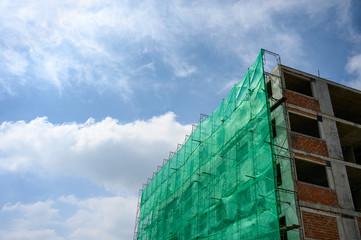
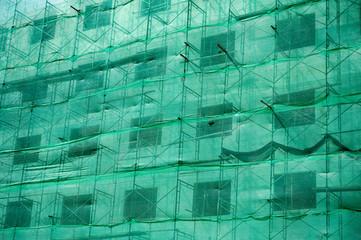
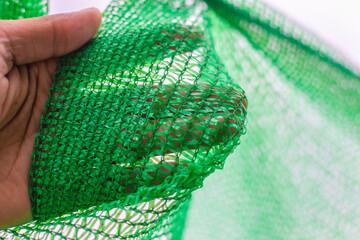

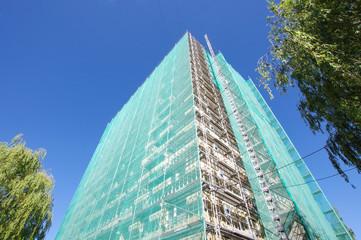
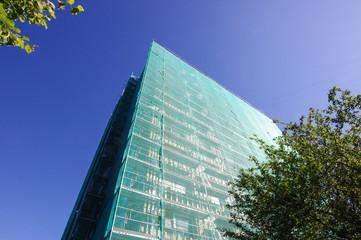



Introduction
Gardening enthusiasts and professional farmers alike are turning to green shade nets as a reliable solution to protect their plants from the harsh effects of excessive sunlight. These versatile and environmentally friendly nets not only shield delicate foliage from direct sunlight but also offer a range of benefits that foster healthy plant growth. In this article, we will delve into the world of green shade nets, exploring their types, applications, and advantages, helping you make an informed decision for your own gardening needs.
Why Use Green Shade Net?
Protecting plants from
excessive sunlight
One of the primary purposes of a green shade net is to provide shade to plants, shielding them from the scorching rays of the sun. By reducing the intensity of sunlight, the shade net prevents sunburn and heat stress, ensuring your plants thrive in a controlled environment.
Reducing heat stress on plants
Green shade nets create a cooler microclimate by filtering the sun’s rays, preventing excessive heat buildup and maintaining a favourable temperature for optimal plant growth.
Preventing sunburn and scorching
Certain plants are more susceptible to sunburn and scorching, especially delicate seedlings, flowers, and foliage. Green shade nets act as a protective barrier, minimising the risk of sun damage and allowing your plants to flourish.
Controlling temperature and humidity levels
In addition to reducing direct sunlight, green shade nets help regulate temperature and humidity levels. They create a more stable growing environment by preventing rapid temperature fluctuations, ensuring your plants are comfortable and healthy.
Minimising water evaporation
Green shade nets reduce water evaporation from the soil by limiting direct exposure to sunlight. This feature not only conserves water resources but also helps maintain optimal soil moisture levels, reducing the frequency of watering and promoting water efficiency.
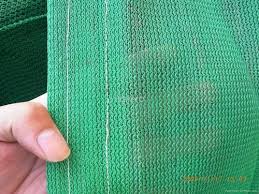
Types of Green Shade Net
Light Density Shade Net
Light density shade nets are designed to provide partial shade, allowing a controlled amount of sunlight to penetrate. With a shading percentage ranging from 30% to 50%, these nets offer a balance between sun protection and sufficient light transmission. They are ideal for nursery plants, greenhouses, and shading delicate flowers.
Medium Density Shade Net
Medium density shade nets offer a higher level of sun protection, typically providing shade percentages between 50% and 70%. These nets are suitable for crops that require moderate shading, such as vegetables, fruits, and ornamental plants. They strike a balance between sun exposure and shade, ensuring optimal growth conditions.
Heavy Density Shade Net
For plants that thrive in low-light conditions, heavy density shade nets are the ideal choice. These nets provide significant shading, blocking 70% to 90% of sunlight. They are commonly used for shade-loving plants, ferneries, and areas where complete darkness is required, such as mushroom cultivation.
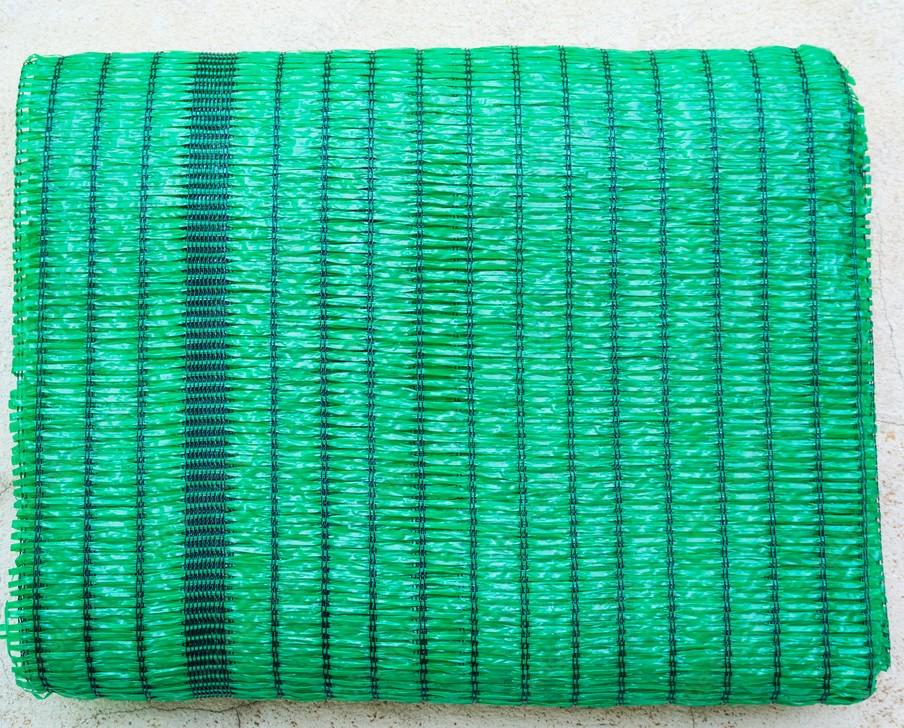
How to Choose the Right Green
Shade Net
When selecting a green shade net for your specific needs, consider the following factors:
Assessing the specific needs of your plants
Different plants have varying shade requirements. Assess the light tolerance of your plants and choose a shade net with an appropriate shading percentage.
Considering the density and percentage of shade required
Depending on your plants’ light requirements, select a shade net with the appropriate density. Light density nets provide partial shade, while heavy density nets offer more extensive shading.
Evaluating the durability and UV resistance of the net
Ensure the shade net is made from high-quality materials that are resistant to UV degradation. Look for UV-stabilised nets that can withstand prolonged sun exposure without deteriorating.
Taking into account the environmental conditions
Consider the local weather conditions and choose a shade net that can withstand wind, rain, and other environmental factors prevalent in your area.
Checking for proper ventilation and airflow
While providing shade, the net should also allow for adequate airflow to prevent heat buildup and promote healthy plant respiration. Look for shade nets with proper ventilation features.
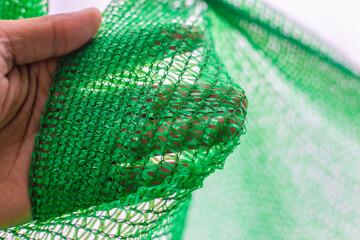
Installation and Maintenance
Installing and maintaining a green shade net is relatively straightforward.
· Step 1: Measure and prepare the area
Measure the area where you intend to install the shade net. Clear any debris and ensure the surface is clean and free from obstructions.
· Step 2: Fix the support structure
Install the necessary support structure, such as posts or wires, to provide stability for the shade net. Ensure the structure is sturdy and properly anchored.
· Step 3: Attach the shade net
Carefully unroll the shade net and secure it to the support structure. Use clips, ties, or fasteners designed for shade nets to ensure a tight and secure fit.
· Step 4: Tension the shade net
Adjust the tension of the shade net to remove any sagging or looseness. This will help maintain the desired shade coverage and prevent wind damage.
· Step 5: Regular maintenance practices
Inspect the shade net periodically for any tears, damage, or signs of wear. Replace or repair any damaged sections promptly to maintain the net’s effectiveness.
· Step 6: Cleaning and storing the shade net
Clean the shade net annually or as needed using mild soap and water. Rinse thoroughly and allow it to dry completely before storing it in a dry, protected area.
By following these installation and maintenance guidelines, you can ensure that your green shade net remains in optimal condition and provides long-lasting protection for your plants.

Additional Uses of Green Shade
Net
While primarily used in horticulture and agriculture, green shade nets have found applications in various other areas, including:
Shade structures for recreational areas
Green shade nets are commonly used to create shaded areas in parks, playgrounds, and outdoor recreational spaces. They offer protection from the sun’s harmful rays, allowing people to enjoy outdoor activities comfortably.
Use in construction and outdoor events
Green shade nets are utilised in construction sites and outdoor events to provide temporary shelter and shade. They offer a cost-effective solution for creating shaded work areas and event spaces.
Creating comfortable outdoor living spaces
Green shade nets can be used to create shaded pergolas, patios, and outdoor seating areas. They provide a pleasant and cool environment for relaxation and entertaining, extending the usability of outdoor spaces.

Benefits of Using Green Shade
Net
Using green shade nets in your gardening or agricultural endeavours offers a range of benefits, including:
Protection against harmful UV rays
Green shade nets act as a barrier, filtering out a significant portion of the sun’s UV rays. This protects plants from UV damage, which can lead to leaf burns, reduced photosynthesis, and stunted growth.
Enhanced plant growth and productivity
By providing an optimal growing environment with controlled light and temperature, green shade nets promote healthy plant growth and increased productivity. Plants are less stressed and can allocate more energy towards development and fruiting.
Conservation of water resources
The use of green shade nets reduces water evaporation from the soil, minimising the frequency of watering. This not only conserves water resources but also improves water efficiency in plant cultivation.
Prevention of soil erosion
The shade provided by green shade nets helps prevent soil erosion caused by heavy rainfall or strong winds. The net acts as a barrier, reducing the impact of water and wind on the soil surface.
Improvement of crop quality and yield
With regulated light and temperature, plants grown under green shade nets often exhibit improved quality and yield. The controlled environment reduces the risk of sun-related damage and allows for better crop development.
Case Studies and Success Stories
Case Study 1: Increased Tomato Production
A commercial greenhouse implemented green shade nets to protect their tomato plants from excessive sunlight. The shade nets reduced sunburn and heat stress on the plants, resulting in increased fruit production and improved crop quality.
Case Study 2: Successful Flower Nursery
A flower nursery utilised green shade nets to create the ideal growing conditions for their delicate blooms. The nets provided the necessary shade and temperature regulation, allowing the flowers to thrive and maintain vibrant colours.
Testimonial 1: John, Home Gardener
“I installed a green shade net over my vegetable garden, and the results have been fantastic. The plants are healthier, and I’ve noticed a significant reduction in sun damage. It’s made gardening so much easier!”
Testimonial 2: Sarah, Professional Farmer
“Using green shade nets in my orchard has been a game-changer. I’ve seen a significant improvement in fruit quality and reduced sun-related issues. It’s a cost-effective solution that has positively impacted my farm’s productivity.”
Conclusion
In conclusion, green shade nets provide a reliable and effective solution for protecting plants from excessive sunlight and creating a controlled growing environment. With their various shading options and applications, they offer benefits such as enhanced plant growth, UV protection, and water conservation. Whether you are a home gardener or a professional farmer, incorporating green shade nets into your cultivation practices can yield impressive results and contribute to the success of your plants.
FAQs (Frequently Asked
Questions)
· What is the lifespan of a green shade net?
Green shade nets have a lifespan of several years, depending on their quality, UV resistance, and exposure to environmental factors. With proper maintenance, they can last up to 5-10 years or more.
· Can a green shade net be used indoors?
Yes, green shade nets can be used indoors to create shaded areas for plants that require lower light levels. They can be particularly useful in areas with limited natural light or to protect sensitive plants from intense artificial lighting.
· Is a green shade net suitable for tropical climates?
Yes, green shade nets are suitable for tropical climates. They help mitigate the effects of intense sunlight and high temperatures, creating a more favorable microclimate for plant growth.
· How often should a green shade net be cleaned?
It is recommended to clean the green shade net annually or as needed. This ensures that dust, debris, and other contaminants are removed, allowing for optimal light transmission and maintaining the net’s effectiveness.
· Can a green shade net be customized for specific requirements?
Yes, green shade nets can be customized to meet specific requirements. Manufacturers often offer a range of options in terms of shading percentage, density, and dimensions, allowing you to find the perfect fit for your specific needs.
Get Support
sales@rcnettingsolutions.com
Office Timings
Mon – Fri(9AM – 7PM)
Address
- India Colony, Gujrat-382350
- +91-9081409194
- rcnettingsolutions@gmail.com




